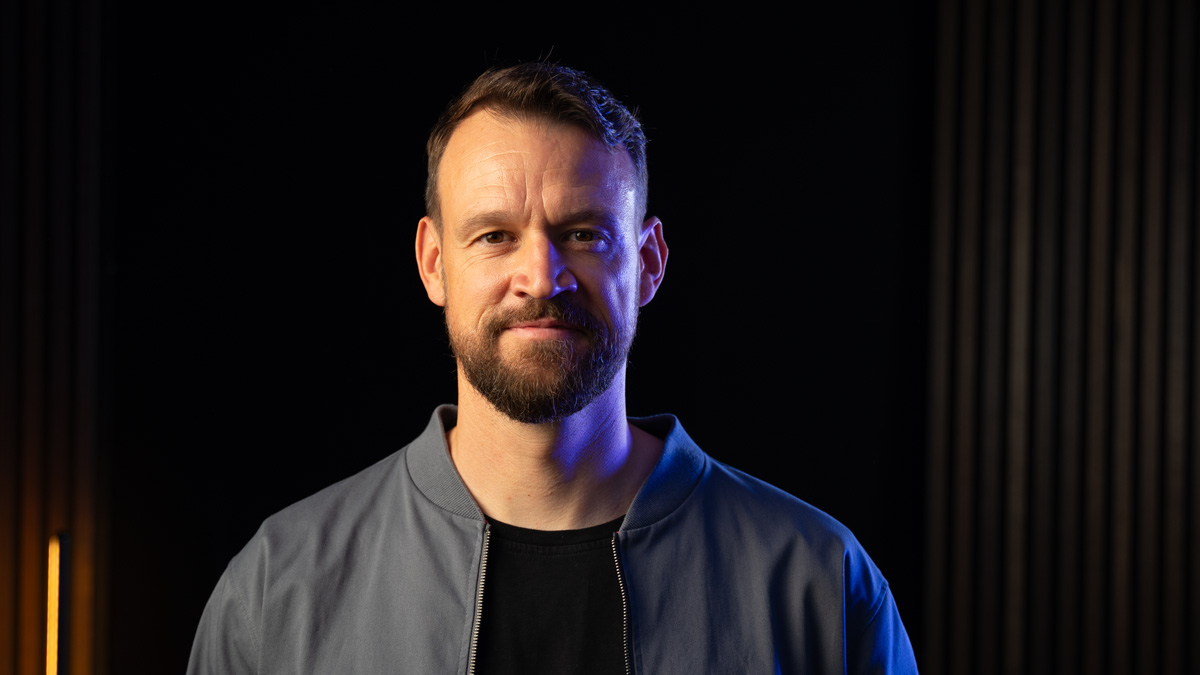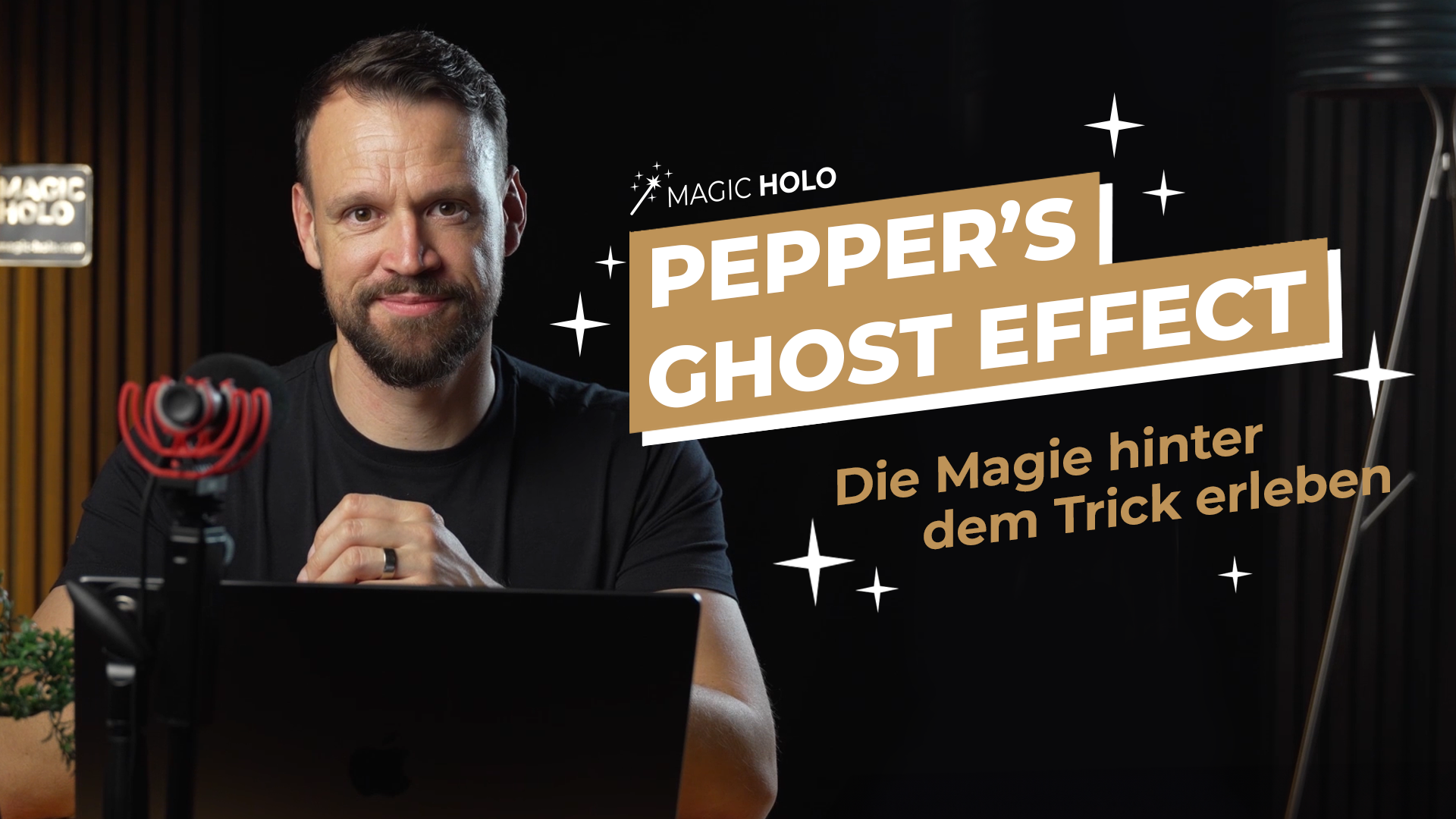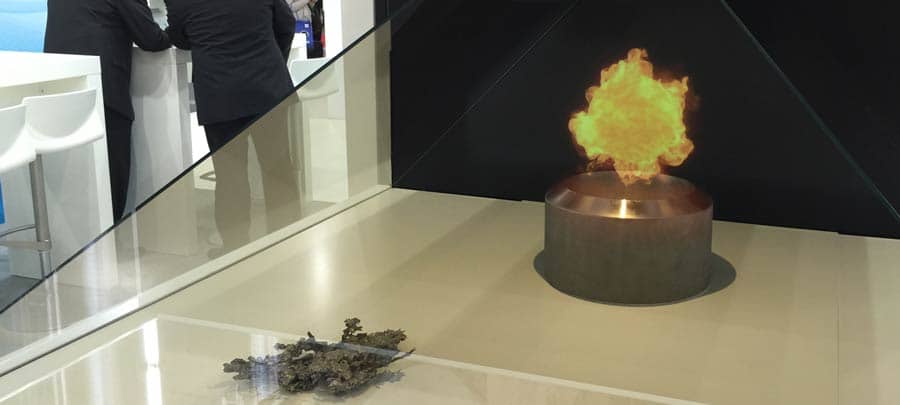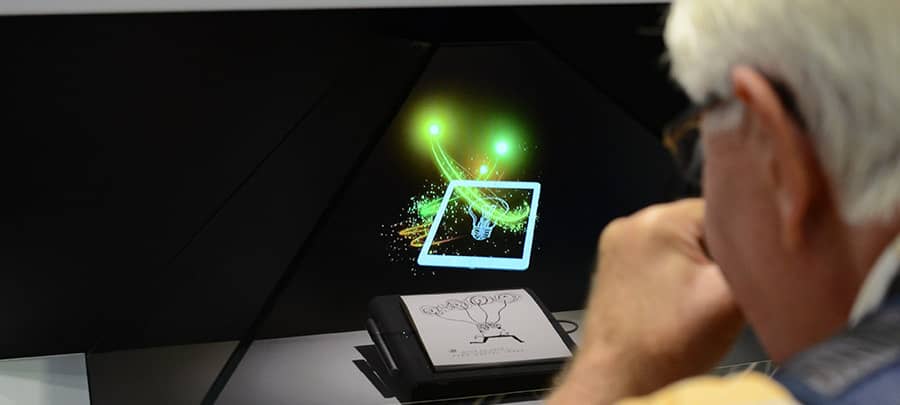Overview
Everything you need to know about HoloPro
Overview
How was HoloPro developed?
The development of the technology led to the Institute for Lighting and Building Technology at the Cologne University of Applied Sciences in 1990. Here, research was carried out into ways of redirecting light from daylight onto façades.
The whole thing was implemented on the basis of holographic optical elements (HOE). One product of this development work is the special HoloPro film.
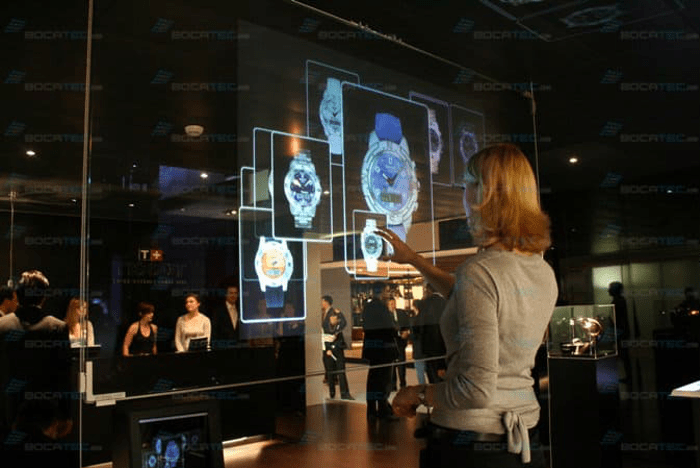
Everything you need to know summarized.
You have been known for many years from shop windows, museums and trade fairs.
Images and videos on relatively transparent glass panels that captivate viewers and appear to be holograms floating freely in space. We explain the technology behind the glass panels called HoloPro and explain where they are ideally used.
How does the technology behind HoloPro work?
The technical highlight that makes the holographic effect of HoloPro possible is the result of a sophisticated film that came onto the market in the early 2010s. The projection surface of each screen consists of a large number of individual holographic optical elements, so-called HOEs. Each HOE has an edge length of just 0.2 millimetres and is applied to a transparent carrier film using automated laser systems.
Approximately 20 million HOEs are applied per square meter. The function of each HOE is to direct the light coming from the projector towards the viewer. Light sources from other angles, such as ceiling lights or daylight, are not deflected. Therefore, installing the projector at a specific angle of 36 degrees is also crucial for the correct result.
The transparent HoloPro film is then embedded between two anti-reflective glass panes. Thanks to the light-directing effect, it can be projected onto the glass element using a beamer without the viewer being able to immediately see the source of the projection.
This allows a relatively high-contrast image to be achieved even in daylight, although it does appear somewhat milky. The transparency of the glass material is largely retained. Each HOE only shows part of the total image information. The eye reassembles the fragments into an overall motif when viewing. HoloPro was the world’s first transparent projection screen and was the market and technology leader in holographic projection screens for a long time.
However, there are now more modern technologies that enable a clearer image and an even better holographic effect, e.g. hologram displays
>
The marketing video
You are currently viewing a placeholder content from YouTube. To access the actual content, click the button below. Please note that doing so will share data with third-party providers.
More InformationWhat options are there for controlling and playing HoloPro?
As already mentioned, a projector or beamer serves as the image source for HoloPro screens. Depending on the lighting situation with daylight, e.g. on a shop window, a correspondingly bright model is required. The decisive factor here is the lumen value. The higher the value, the brighter the projector. The installations can be upgraded to interactive modules by means of touch controllers, whose conductor tracks are embedded in the glass composite. Visitors can navigate through the content independently.
In principle, however, the HoloPro screens can be installed anywhere. All you need to do is ensure that the screen is securely fastened and that the projector can shine onto the HoloPro screen while standing on the floor or suspended from the ceiling.
What can I use HoloPro panes for?
Wherever you want to make people stop and marvel in a special way.
HoloPro is typically used in high-quality shop windows, in museums as a spectacular explanatory medium, on trade fair stands and in reception halls, but also as a digital room divider. Some of you may even have come across a HoloPro on television. For example, the system was used in “Hirschhausen’s Human Quiz” or in the Galileo program.
In which sizes is HoloPro available?
HoloPro’s standard sizes range from 20″ to 100″ screen diagonals. In centimetres, this means a range from 50 cm to 254 cm.
Our conclusion:
The HoloPro screens were pioneers of holographic projection for a long time, but are now somewhat outdated. On closer inspection, the viewer recognizes the somewhat milky-looking film, which distracts from a perfect holographic result.
Modern displays that use the Pepper Ghost effect (link to Pepper Ghost) or rotating LED rotors make it possible to create even more spectacular 3D holographic illusions these days. Here you will find an overview of the current state of the art in holographic displays. -> Button to product overview.
Are there alternatives to HoloPro?
Yes. There are various holographic systems available. From smaller systems for retail or POS, to large installations for use at trade fairs and events.
Other relevant articles
What is a 3D hologram?
What is a 3D hologram? Everything clearly explained.
What is the legendary Pepper’s Ghost effect?
What is the legendary Pepper's Ghost effect?
How to use hologram projectors effectively at your trade fair stand
How to use hologram projectors effectively at your trade
Discover the world of holograms: Technology, applications and individual solutions for companies
Discover the world of holograms: Technology, applications and individual solutions
Hologram projector – Rent. Buy. Comparison & Info
Hologram projector - Rent. Buy. Comparison & Info
Everything you need to know about HoloPro
How was HoloPro developed? The development

